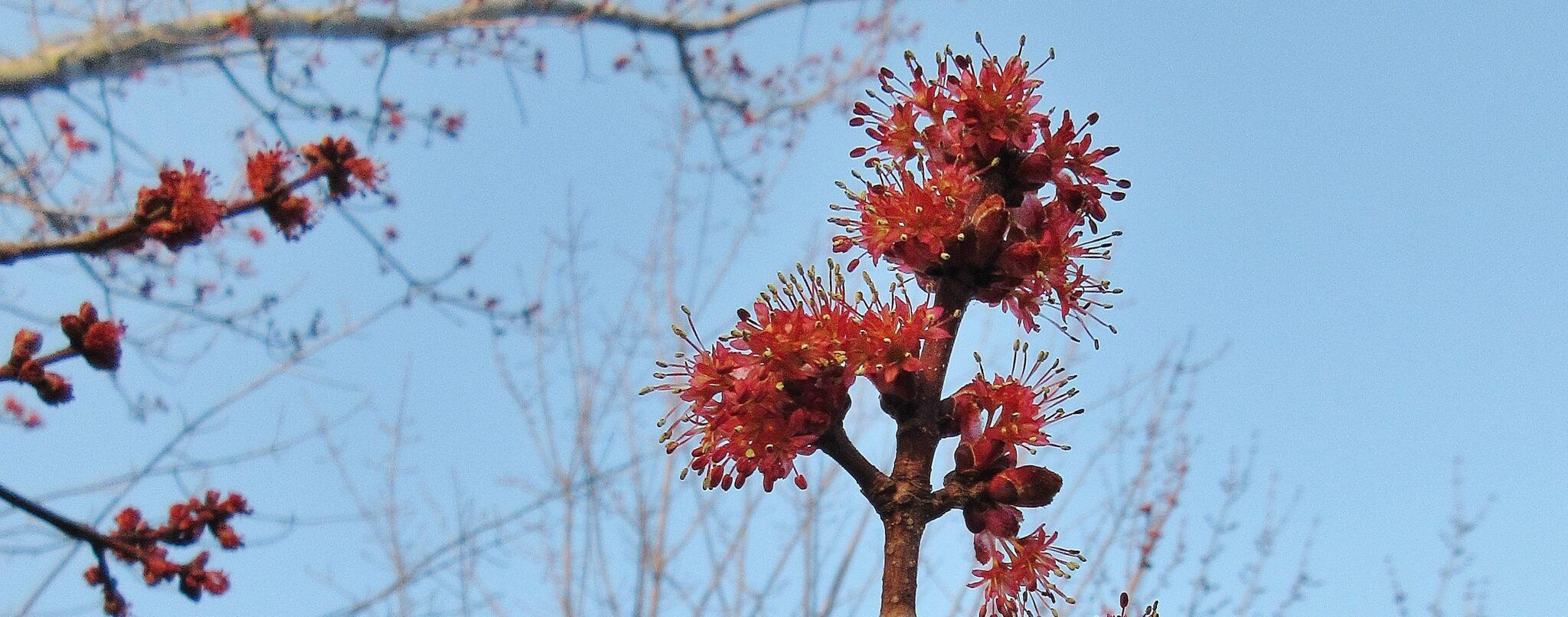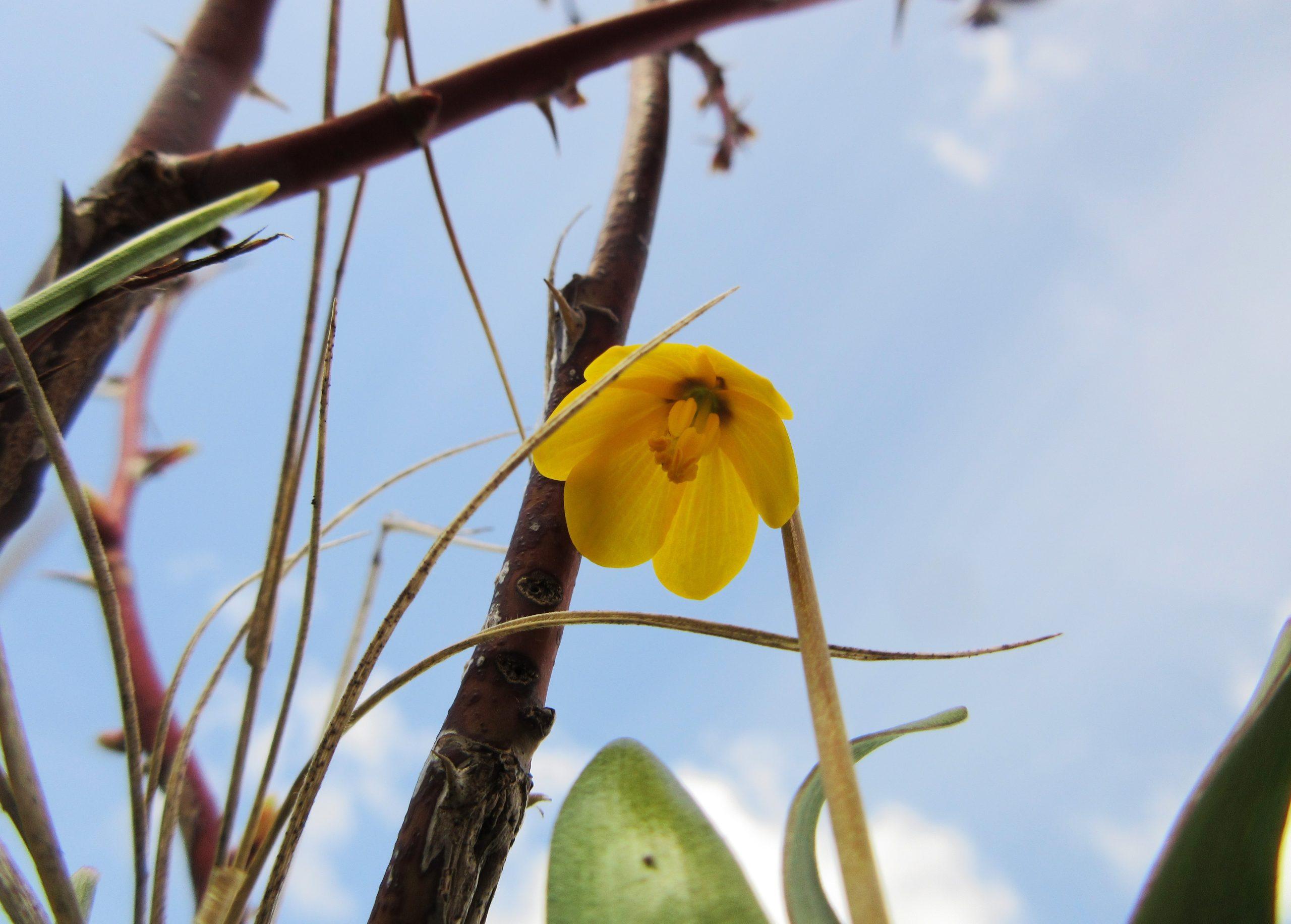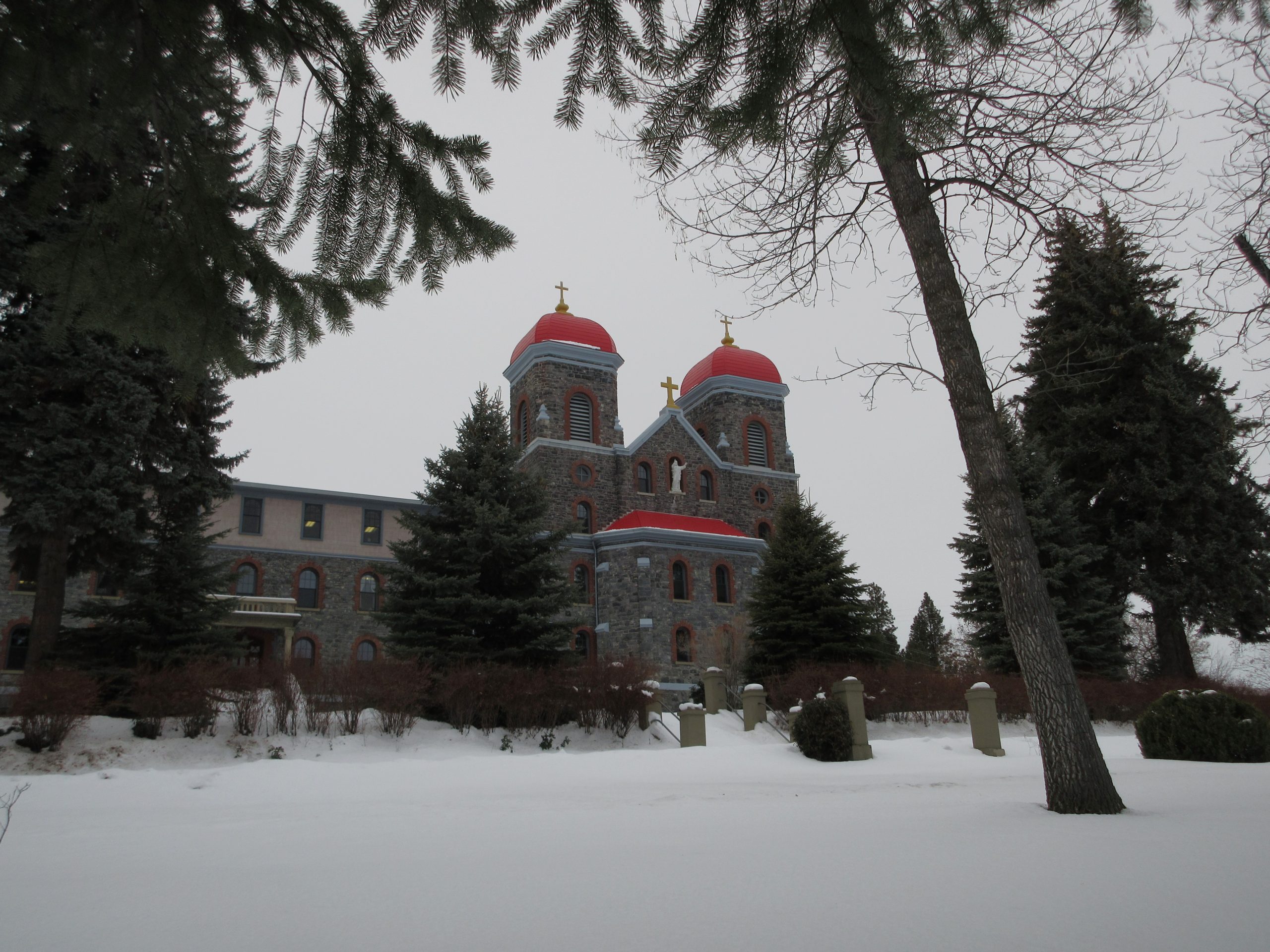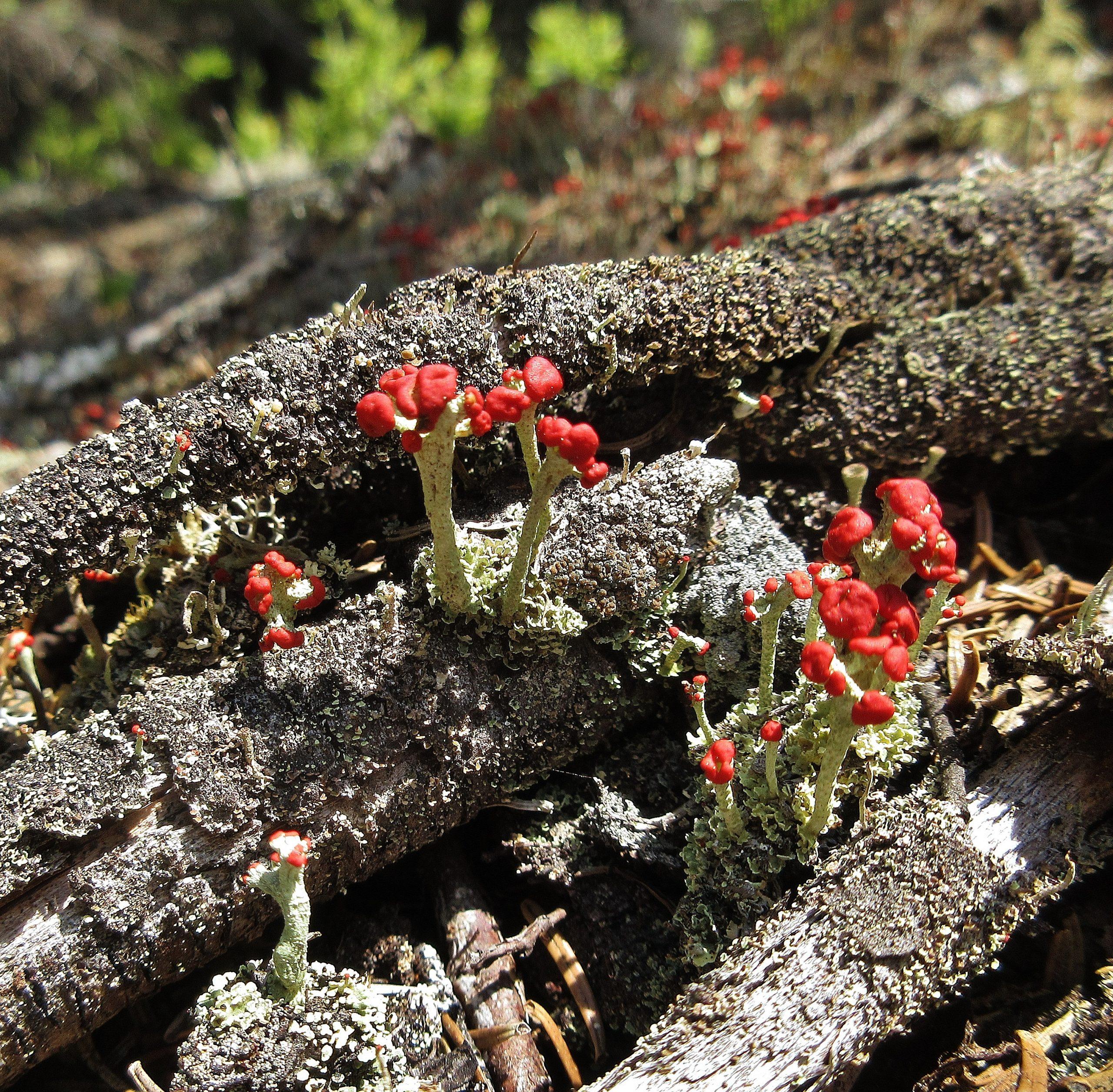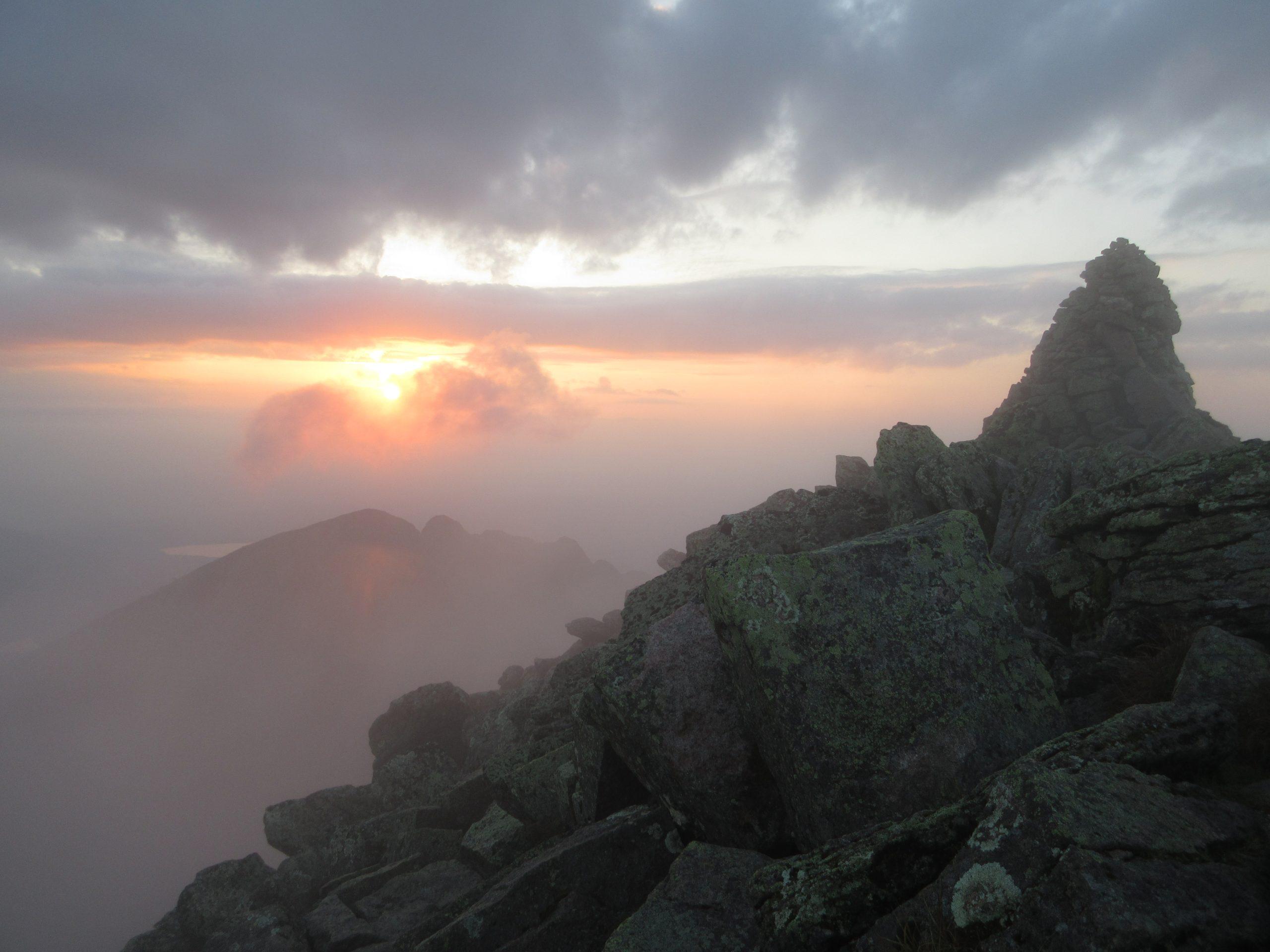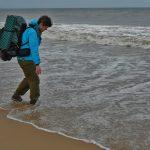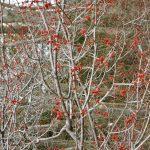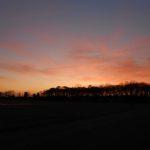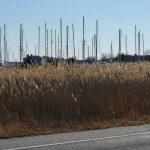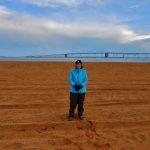On March 25, I pulled two loads of supplies across the ice of First Roach Pond, knowing that rain the following day would likely make the ice unsafe. On the 30th, game wardens Joshua Polland and Troy Dauphinee pulled into my driveway on their snowmobiles for a quick visit and tour of my land. They were traveling over a network of recreational trails and unplowed gravel roads. The snow covering their route was deteriorating, with bare, wet ground showing through in some spots. Ten days earlier, they could have pulled right up to my cabin, but that morning, they had to leave their machines a couple hundred feet up my driveway and walk to my door. It would be their last day on the trails, they thought.
After they left, I knew I was officially into mud season. Though I had been living in solitude for several months, mud season brought my isolation to a new level.
No vehicle could reasonably reach me. The soggy ice was too weak to support the weight of a snowmobile, too strong for a boat plow through it. The mucky roads and trails would trap snowmobiles and wheeled vehicles alike. And so, for the next couple of weeks, I would be cut off from the outside world. In case of dire need, I could slog to my car, four and a half miles away, on foot. But for the time being, I was pretty much guaranteed to be the only human in my backwoods realm.
I was surprised by the way my spirit welcomed this quiet, in-between time. I relaxed into a sense of tranquil spaciousness. Knowing I had everything I needed, I felt secure and content. Over the coming days, with nowhere to go, I would simply bear witness to the retreat of winter and the gradual unfolding of spring.
Soon, the voices of returning birds began to announce the new season. The night of April 3, I heard distant honking: the first Canada Geese were arriving from southern climes. The next morning – Easter – I walked down to my shore. The temperature, at twenty-something Fahrenheit, remained on the wintry side. But the sun was far north of its rising on the Winter Solstice. Its strengthening light called the woods and waters to awaken from winter’s dormancy.
My gratitude for the life within and around me spilled out in a song, “Morning Has Broken.” I adapted the words a bit to suit my surroundings. In the original version, a blackbird speaks in the garden; in mine, a chickadee speaks in the forest. If you’d like to listen, here’s a link to my recording: https://www.youtube.com/watch?v=_HcwkCGGnUk.
Just a few days later, I heard a robin’s lilting melody pouring down from treetops near my cabin. Then came the energetic chirping and buzzing of a song sparrow along my shore. In mid-April, two of my favorite birds delighted my ears: the hermit thrush and the loon.
To me, the hermit thrush’s song calls to mind a flute meditation played by an angel. As far as I can tell, the bird never repeats itself; each song varies a bit from the ones before and after. I’ve listened, enchanted, for long stretches, drawn in by liquid melody and rich internal harmony. Unlike humans, thrushes can sing two notes at once, harmonizing with themselves.
However ethereal the thrush’s voice may sound, his song (the singer is always male) serves distinct physical purposes. The bird is proclaiming his territory and/or trying to attract a mate. It seems my thrush neighbor has already achieved one of his goals. Several days ago, motion outside my window caught my eye. Looking more closely, I smiled to see a pair drinking from a puddle. I will need to be careful as I walk through my woods: hermit thrushes build their nests on the ground.
The loon is another otherworldly vocalist. When I heard my first loon of the year, I was on my shore, beneath a sliver of a waxing crescent moon, watching a sunset flare into bands of glowing pink. According to writer John McPhee, the Crees described the loon’s wail as “the cry of a dead warrior forbidden entry to Heaven.” From my human perspective, the sound is mournful beyond words, haunting, soul-piercing.
Of course, to the loons themselves, their wail has no such connotations. Because it carries well over long distances, it allows mates to remain in contact when they’re apart. Since that first evening, I’ve heard more wailing, along with males’ aggressive yodeling and alarm calls that sound like crazy laughter. I’m guessing the pond is now home to several loon pairs, who are sorting out territories where they will build nests, lay eggs, and rear chicks.
In my last post, on April 9, I shared my excitement that an eagle had returned to the nest on the north shore of the peninsula where my cabin is located. Since then, I’ve been back twice. On my first follow-up visit, I felt very encouraged. I spent about half an hour near the base of the tall pine that cradles the nest. An eagle was flying back and forth, perching repeatedly on or just above the nest, then taking off again. The eagle was carrying nothing in its beak, neither food nor nest-building material. I had the sense that the bird was simply patrolling territory. I couldn’t tell if there was another eagle sitting inside the nest or not.
On my second visit, I was disappointed when I witnessed no activity. Maybe the eagle I had seen was alone? Perhaps he/she was seeking a mate? Had the eagle given up and moved on, I wondered?
Early this morning, as I stood on my cabin porch, I glimpsed a large bird flying low above the treetops near my shore. At first, I couldn’t see its coloration clearly, but as it headed westward, the rising sun illuminated its white head and tail – an eagle! I’ll keep checking the nest. I’m still hoping for eaglets.
In the Maine Woods, at this time of year, the relationship between winter and spring is always a bit of a dance – though sometimes it seems the word “battle” might be a better choice. Spring makes a tentative advance and winter retreats. But winter is always reluctant to release its icy grip on the land. It invariably reasserts itself, lunging forward again, shoving spring aside. The calendar often turns to May before winter finally yields, once and for all, to the surging life of the new season.
April 8 – 15 brought a succession of surprisingly gentle days, clear and calm. Afternoons were warm enough that I sat outside to eat, read, and nap, basking in sunshine. On April 10, I believe Greenville – the nearest town, about 30 miles by road from my cabin – set a new temperature record. According to the Weather Channel, the previous record for that date was 68 Fahrenheit, set in 1945. This year, the National Weather Service reported a high of 70.
Ironically, the unseasonable temperatures threatened my food supply. If the meat and milk in my cooler spoiled, I wouldn’t have starved, but my food choices would have been restricted to less perishable items. Fortunately, I was able to mine a single lingering patch of snow for refrigeration material. I put a snow-filled plastic bag into the cooler. When it melted, I dumped the water and refilled the bag from the shrinking but still adequate source.
The local flora, on the other hand, seemed to welcome the caress of warm air. On my shore, alder catkins opened. In sheltered areas, red maple trees blossomed. Coltsfoot bloomed on my driveway.
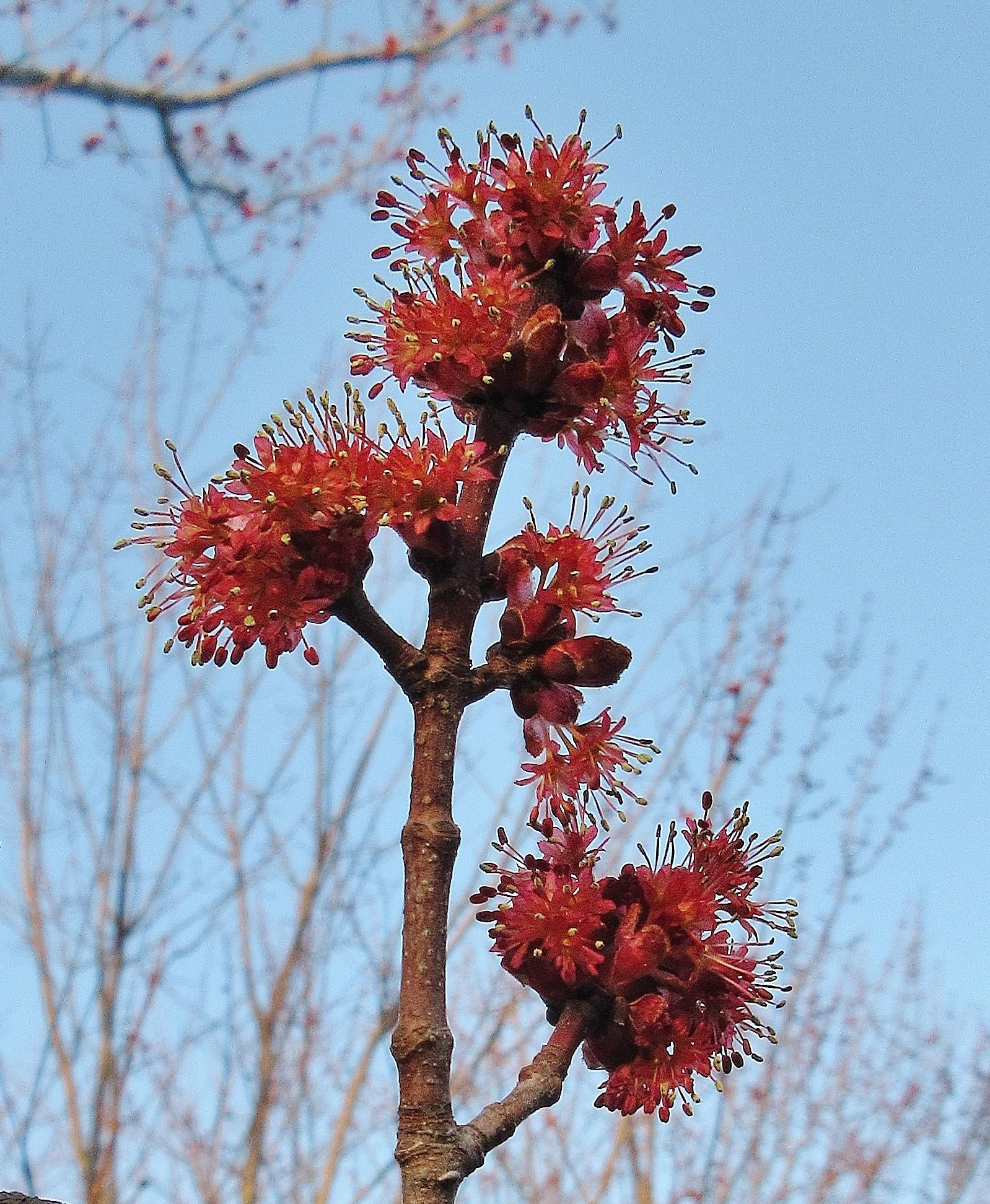

Each warm day further eroded the remaining ice on First Roach. The band of open water along my shore widened as the ice receded. At sunset on April 11, there was still significant ice toward the center of the pond. On the morning of the 12th, I peered into gray mist. As far as I could see, the ice had vanished overnight. A woman who lives on the opposite side posted photos of sodden gray remnants, blown by the wind against her shore.
That evening, the water’s naked surface glowed pink, reflecting the sky above.

As far as I know, no one has kept track of First Roach’s ice-out dates over time. The pond empties, through a six-and-a-half-mile stretch of the Roach River, into Moosehead, Maine’s largest lake. Records for Moosehead go back to 1848; ice-out was officially declared this year on the morning of April 16. There have been only 3 other ice-outs on or before that date: April 14, 1945; April 15, 2010; and April 16, 2012. In other words, three of the four earliest ice-outs on record have happened in the past 12 years.
Statistical analysis reveals a significant trend toward earlier ice-outs over time, with ice-out dates moving nine days earlier from 1850 to 2000, consistent with global warming. The change on Moosehead is similar to what records show for other lakes in northern New England, and is consistent with trends toward earlier ice-outs throughout the Northern Hemisphere. (I’ll be happy to provide reports of relevant scientific studies to anyone who would like to see them.) Our winters are attenuating. I grieve to think of how my home – its woods, its waters, and the creatures who inhabit them – may change over the coming decades.
At the same time, I remind myself how important it is to savor the gifts that surround me here and now, to rejoice in the wonders each day offers. With the ice gone, I’ve had new opportunities to see and hear some of the animals with whom I share my land.
Over the winter, I spotted otter tracks nearby, but I had yet to meet an otter in person. On April 13, I was sitting outside reading in the sun. I was on a bench beneath spruce trees, with a low hedge of small firs between me and the rocky shore just below. I heard splashing in the water, and glanced over the top of the hedge. I was thrilled to see an otter emerging from the pond, dragging a sizable fish held with its teeth. Trying to be quiet, but wanting a better view, I stood up and moved forward slightly, hoping the hedge would conceal my presence. But the otter raised its nose into the air as though sniffing my scent, then pulled its prey back into the water and swam off. From what I could hear, the otter returned to the shore just beyond my view. I was tempted to follow, but decided I should allow the otter to enjoy its hard-earned meal in peace. Since then, I’ve twice caught glimpses of an otter entering the water from my shore, and found fragments of a crayfish shell – likely the remnants of a meal – scattered on shoreline rocks.

The melting of snow and ice is cause for celebration among local amphibians. On April 15, as I approached a wetland formed by a beaver dam along my shore, I heard sputtering quacking sounds. Wood frogs! They spend the winter alone, blanketed under leaf litter on the forest floor. In spring, they congregate in vernal pools swollen with newly-liberated water. Hopeful males loudly advertise their eagerness to reproduce, and mating frenzies ensue.
As it turned out, the frogs’ excitement was a bit premature. Temperatures dropped, and two days later, I awakened to an exquisite snowscape.

Since then, temperatures have swung up and down. The light snow of the 17th melted quickly. But on April 22, the National Weather Service issued an official Winter Weather Advisory. The temperature never made it out of the twenties Fahrenheit, and the wind roared above 40 miles per hour. With wind chill factored in, the temperature never rose above the teens. Waves pounded my shore. Several inches of snow fell.
In between storms, on the morning of April 19, my mud-season isolation ended. Exactly twenty days after Wardens Polland and Dauphinee headed down my driveway on their snowmobiles, I was surprised by a horn honking outside my cabin. Eric Stirling – my savior when I stranded my car in the early-December nor’easter that began my winter – had driven the seven and a half miles from West Branch Pond Camps. He brought the news that the roads were open.
The knowledge felt bittersweet. In the end, mud season had not trapped me. Rather, it had shielded me from the hectic mainstream world.
In preparation for my re-entry into that world, I went online to seek an appointment for my first dose of COVID vaccine. After futile attempts to register at a mass vaccination site, I discovered open slots at a pharmacy about an hour and a half drive away. By then, the April 22 storm was looming, and so I signed up for the 23rd.
That morning, I arose early to walk the four and a half miles to my car through the new-fallen snow. I scraped a thick white crust off my windshield and heaved a sigh of relief when the engine started easily despite its four-week hiatus. I headed off to get my injection and a load of groceries, and was able to drive all the way back to my cabin. Most of the snow had melted in my brief absence.
As I neared my land, I spotted a cow moose, looking decidedly scruffy as she shed her thick coat, but healthy nonetheless. Thinking about her now, I feel a sense of camaraderie. Each in our own way, we’ve survived our winter in the woods, and are emerging ready to meet the challenges that lie ahead.
In my next post, I plan to answer questions that readers have been sending me. Have you been meaning to submit a question? Now’s the time! If you receive email notifications of new posts, simply reply to one of them. Otherwise, you may reach me at wendy@wendyweiger.com.
My book Living Every Season: A Mindful Year in the Maine Woods is available for online ordering! Take a look: https://www.wendyweiger.com/photo-book/. It’s also for sale at several locations in Greenville, Maine: Northwoods Outfitters, the Corner Shop, Indian Hill Trading Post, and the Moosehead Historical Society. And in Monson, you’ll find it at the General Store. (Before making a trip, you may want to call ahead to be sure the shop where you’re headed hasn’t sold out.)

